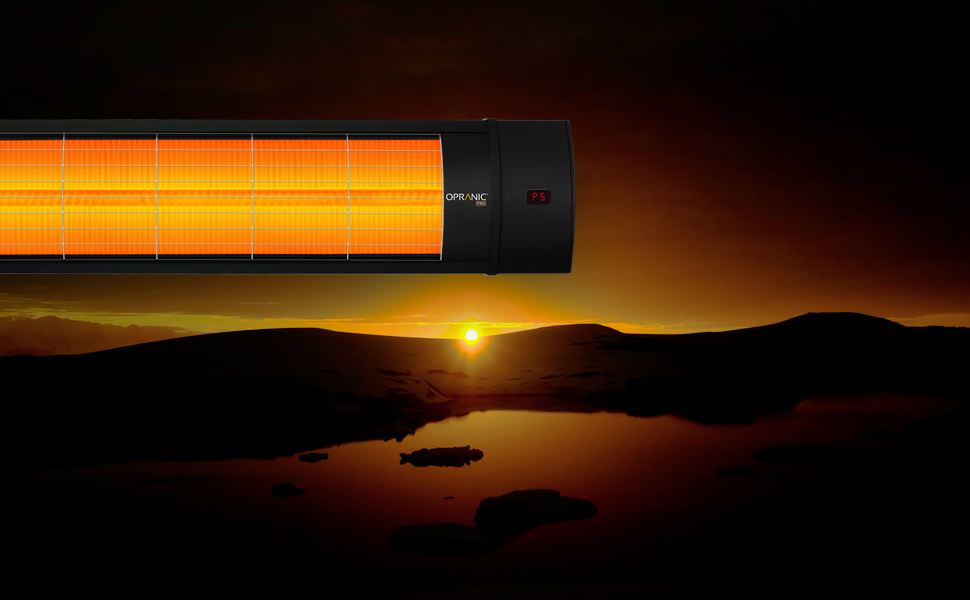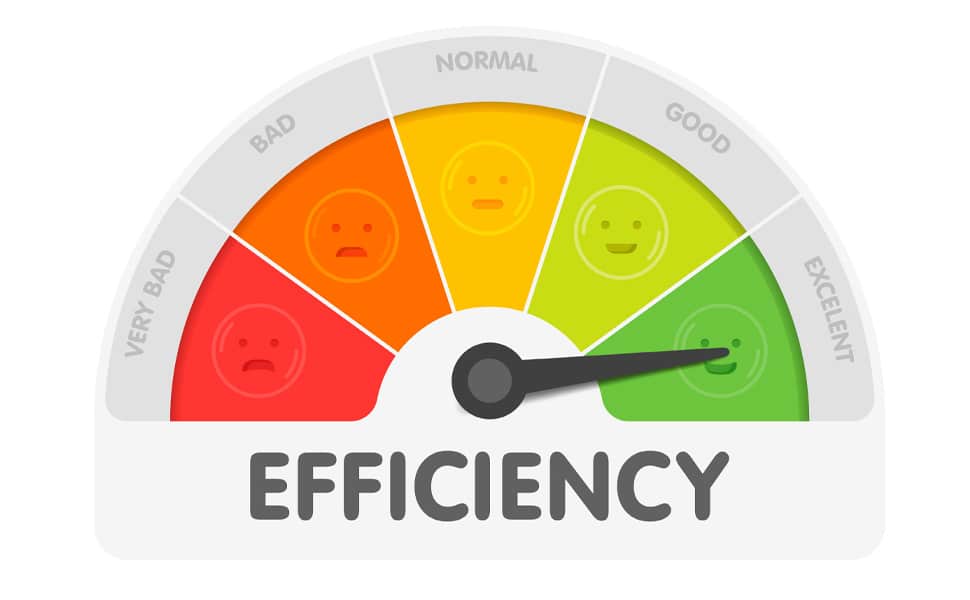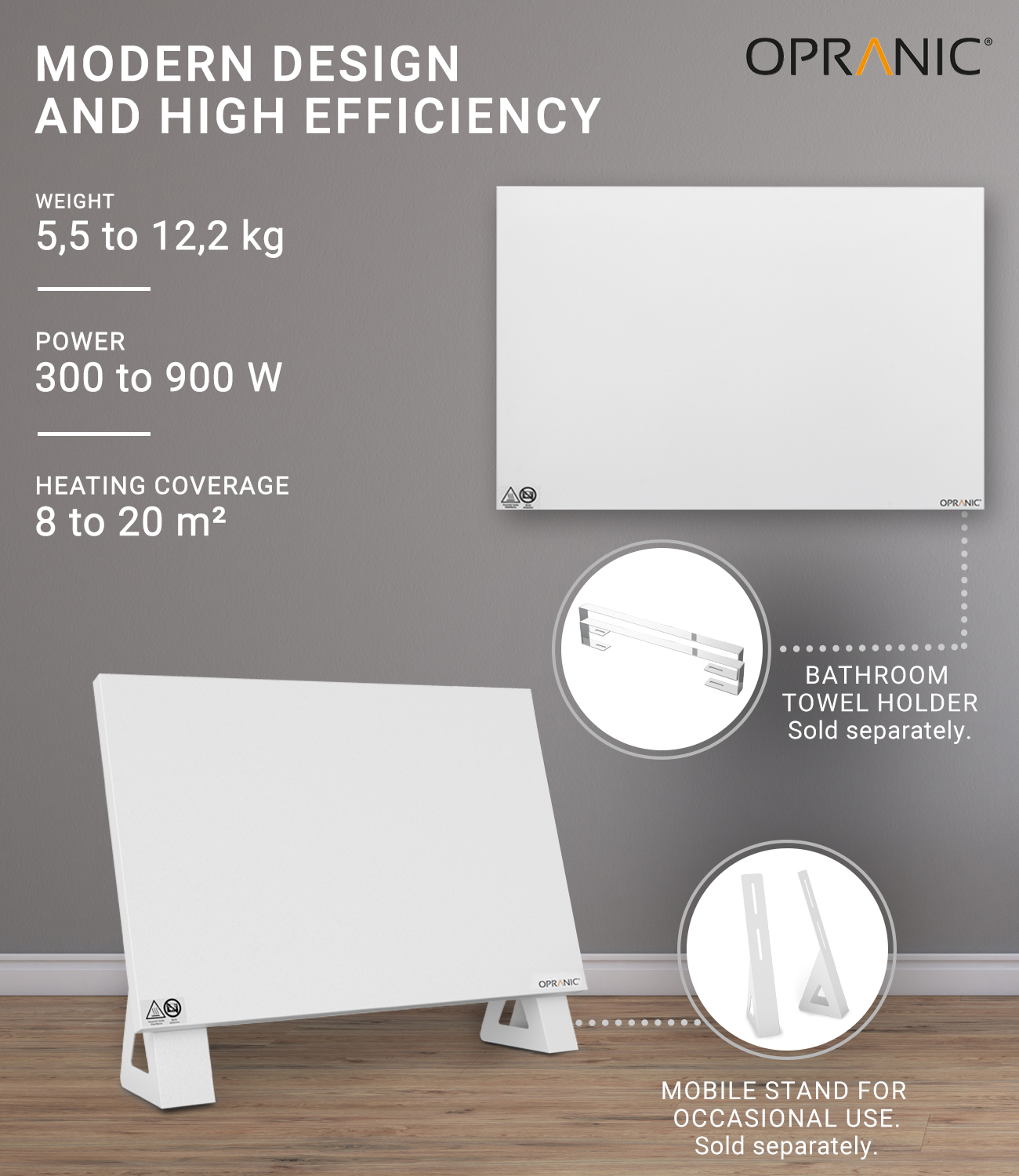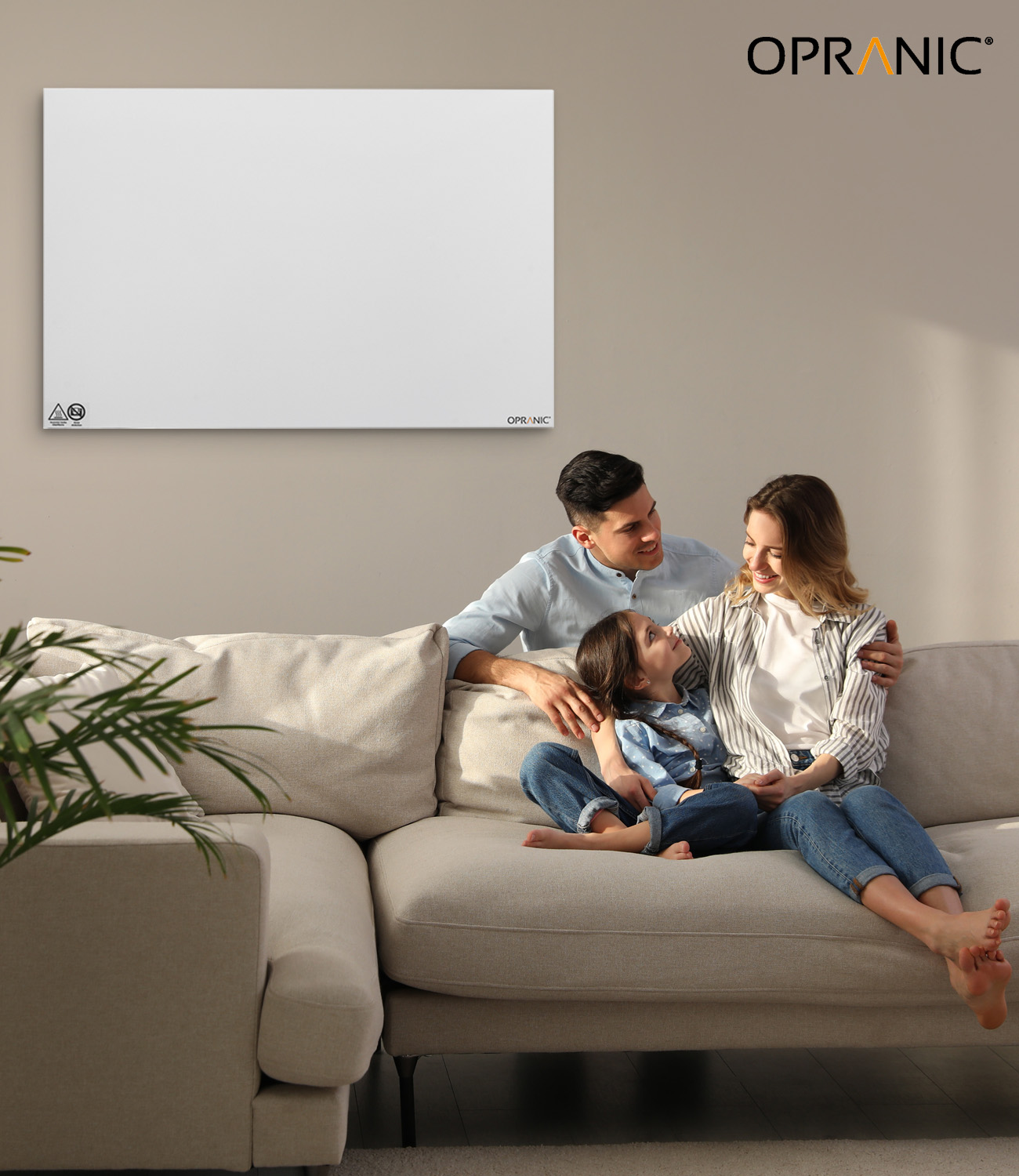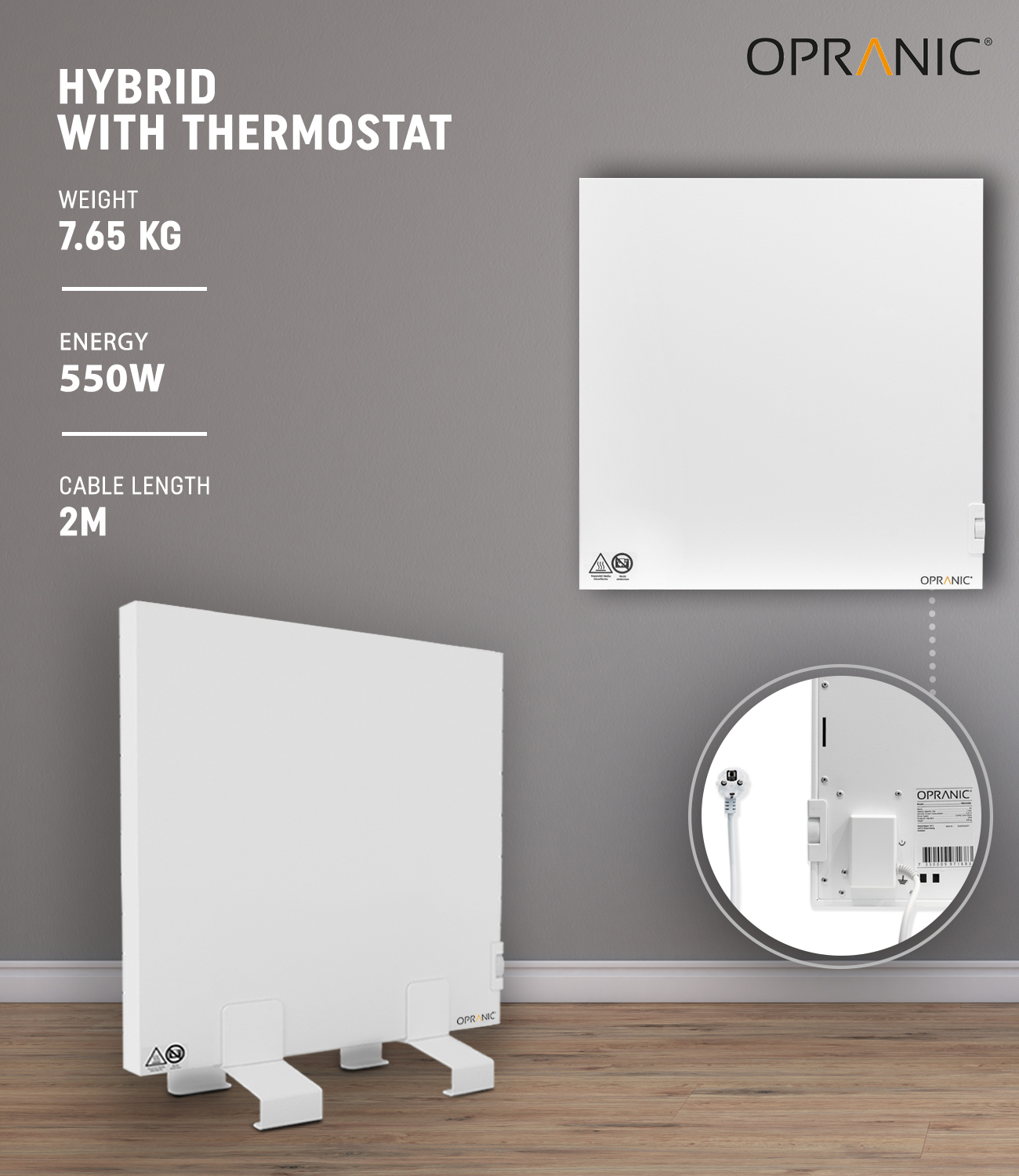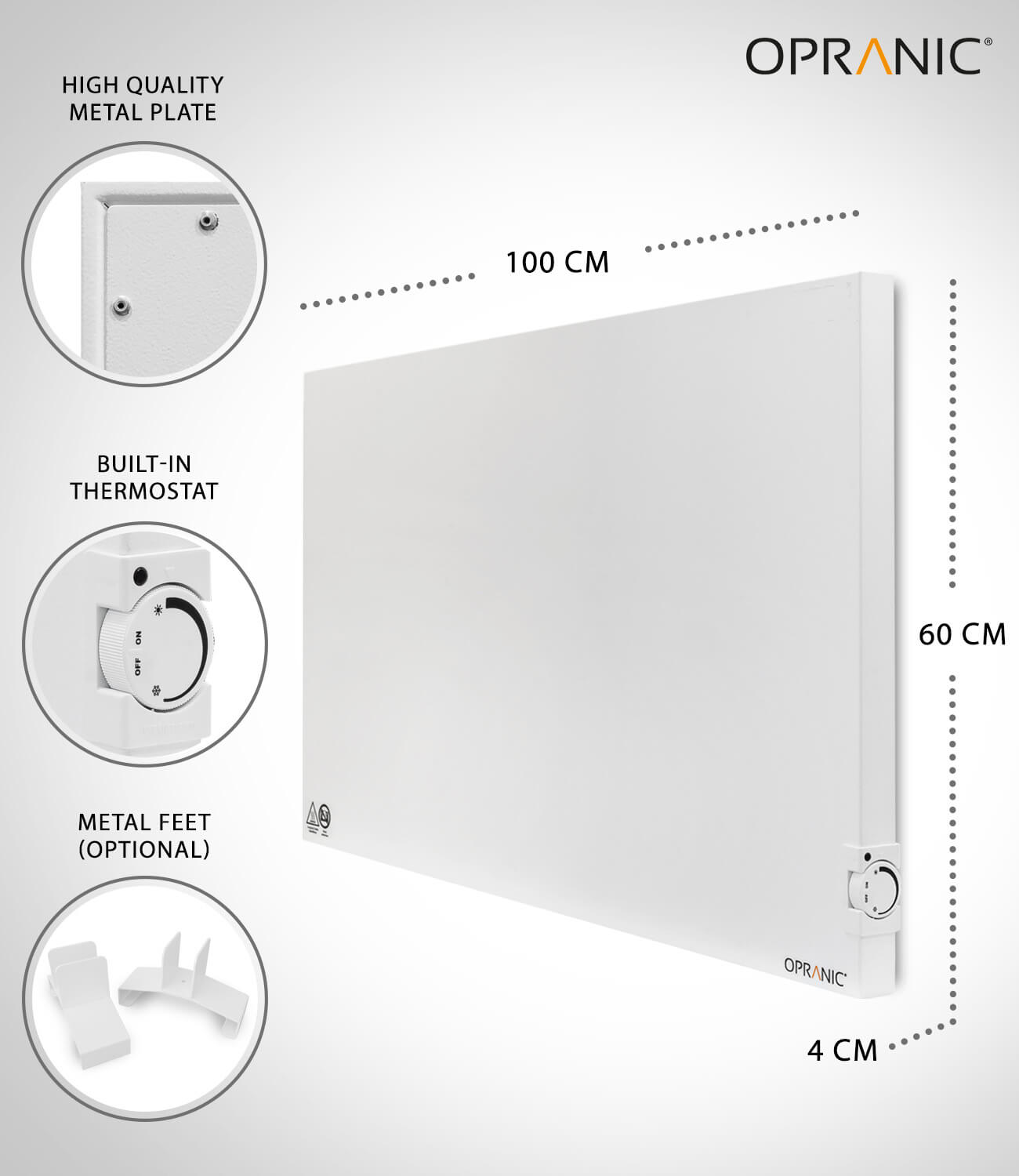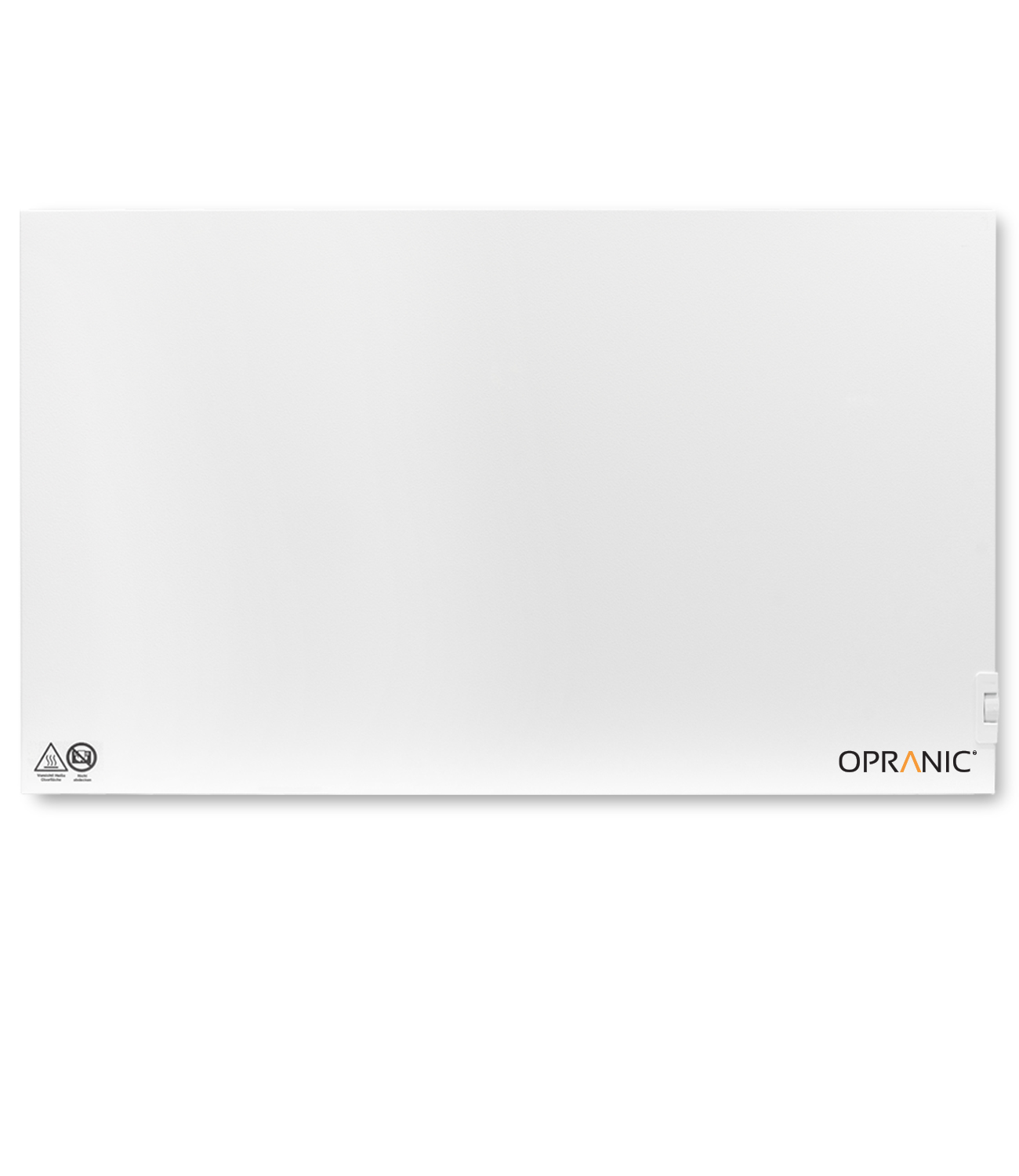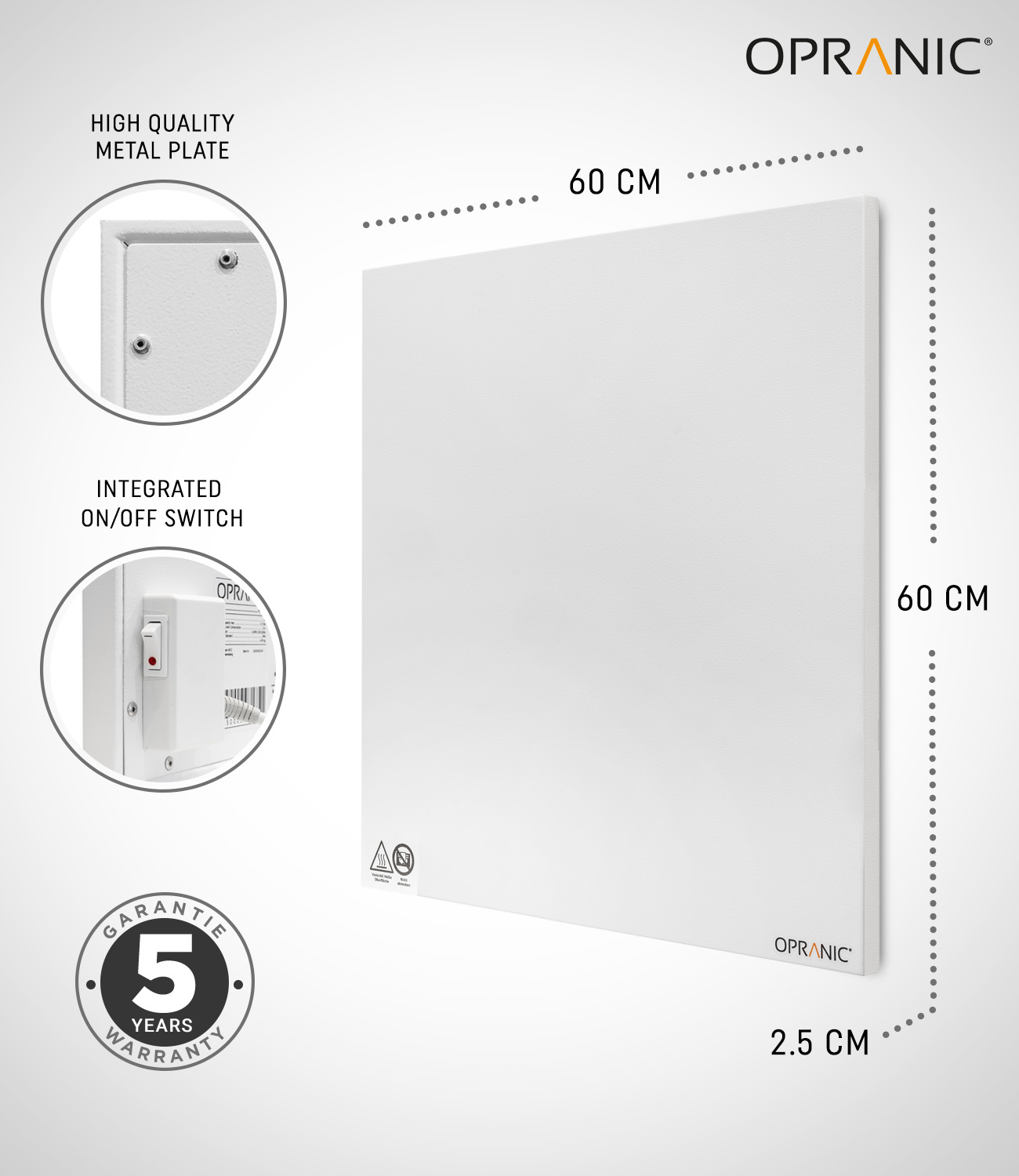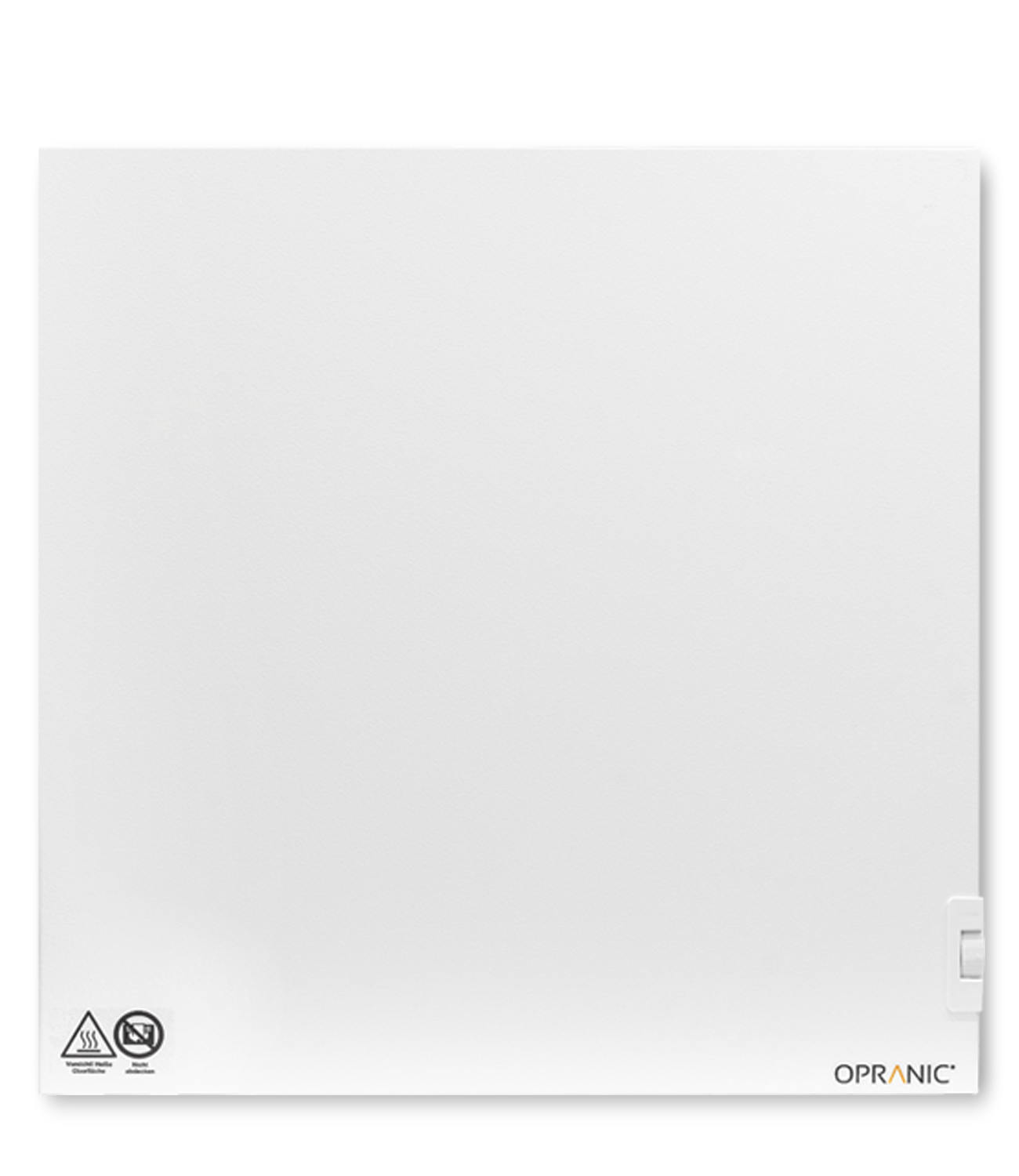The Opranic Science
A visual analysis comparing Opranic IR-X Carbon Black technology (Mediumwave IR-B at ≈2.4 µm) with traditional Halogen (Shortwave IR-A).
The Key to Efficiency: Heat vs. Water Absorption
The human body is about 70% water. For efficient heating, the heater’s wavelength (energy peak) must match water’s ability to absorb that energy.
Halogen (red line) peaks at ≈1.0 µm where water absorption (blue area) is very low. Opranic Carbon Black (orange line) peaks at ≈2.4 µm, matching the rapid rise in absorption.
Finding the Perfect Balance: Intensity vs. Absorption
If you only follow absorption, long-wave (IR-C) would win — but intensity matters outdoors. Heat needs enough energy to reach the skin before wind cools it.
Halogen (IR-A): The Pressure Washer
Aggressive and penetrating; energy in the wrong place and unpleasant.
Opranic Carbon Black (IR-B): The Perfect Shower
Balanced intensity & absorption; efficient, comfortable outdoor heat.
Longwave (IR-C): The Dripping Faucet
Great absorption but too weak — heat blows away before it helps.
Safety & Comfort: Penetration in Skin
Heat receptors are in the outer skin layers (Epidermis/Dermis). Mediumwave IR-B is absorbed where the receptors are; short-wave IR-A penetrates deeper and feels harsher.
Opranic Carbon Black (IR-B)
Superficial absorption → immediate comfort.
Halogen (IR-A)
Deep, aggressive penetration → tissue stress.
Technical Comparison
| Property | Opranic Carbon Black (IR-B) | Halogen (IR-A) |
|---|---|---|
| Wavelength | ≈2.4 µm | ≈1.0 µm |
| Skin Absorption (Water) | Very High | Very Low |
| Balance (Intensity/Absorp.) | ✔ | ✘ |
| Penetration | Superficial (Safe) | Deep (Aggressive) |
| Comfort (Glare) | Soft, pleasant glow | Sharp, glaring light |
Analysis: Glare vs. Heat
Halogen emits a larger portion of its energy as visible light (glare), while Opranic Carbon Black focuses its output into efficiently absorbed infrared heat.
Halogen (IR-A)
Energy split between aggressive light and inefficient heat.
Opranic Carbon Black (IR-B)
Energy goes to heat; glow kept minimal.
Conclusion: The Scientifically Smart Choice
While Halogen (IR-A) and Opranic Carbon Black (IR-B) are both modern infrared technologies, they differ in how they deliver usable warmth. Halogen radiates a larger share as visible light, whereas Opranic’s IR-X Carbon Black concentrates its energy within the optimal wavelength range for human comfort and absorption — providing balanced, immediate, and gentle heat in a safe way.
Optimized Balance
Peak at ≈2.4 µm for maximum efficiency.
Japanese Carbon Fiber
High quality for stable operation & long life.
IR-X Design
Flexible mounting in all directions.
References (Scientific Sources)
- Curcio, J. A., & Petty, C. C. (1951). “The Near Infrared Absorption Spectrum of Liquid Water.” Journal of the Optical Society of America, 41(5), 302–304.
- Schroeder, P., et al. (2008). “Effects of Infrared-A Irradiation on Skin.” In: B. N. T. (eds) Skin Aging. Springer, Berlin, Heidelberg.
- ICNIRP — International Commission on Non-Ionizing Radiation Protection (2013). “ICNIRP Guidelines on Limits of Exposure to Incoherent Visible and Infrared Radiation.” Health Physics, 105(1), 74–96.
- Barolet, D. (2016). “Light-Emitting Diodes (LEDs) in Dermatology.” Seminars in Cutaneous Medicine and Surgery, 35(3), 161–169.
